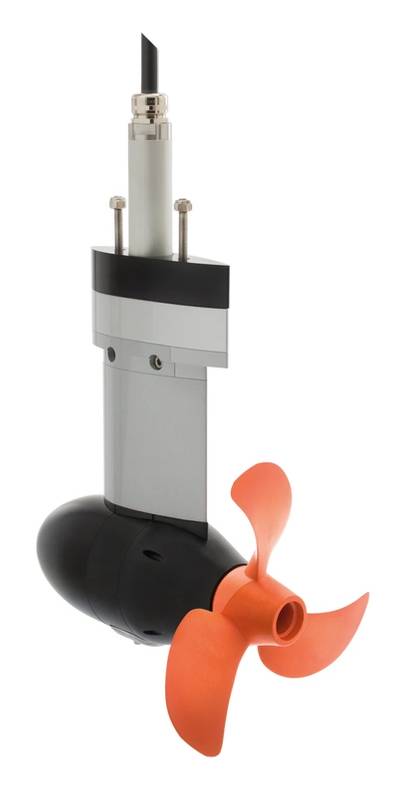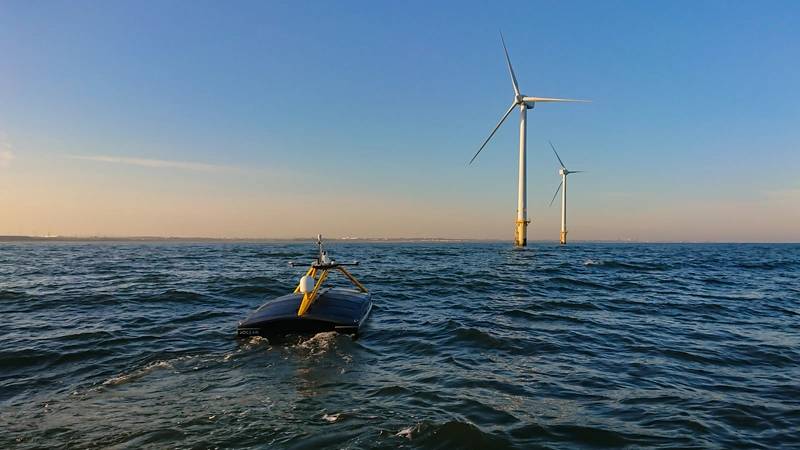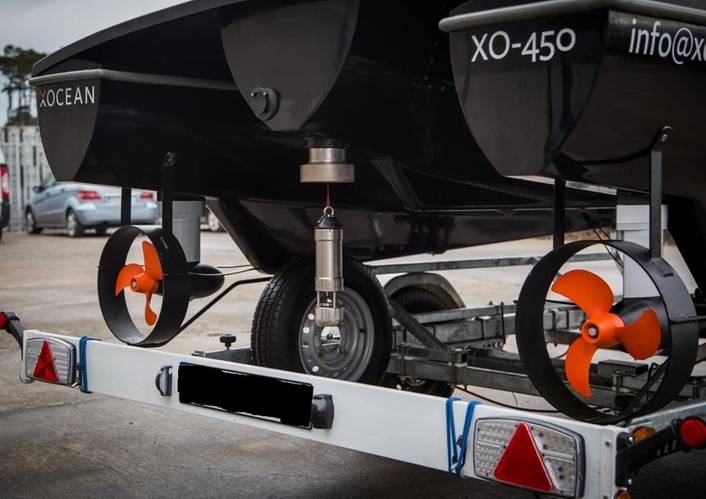Tech File: Hybrid-Electric Propulsion for Crew-less Vessels
The move to autonomy on the world's waterways is undeniable, with the direction clear, the pace hazy. What is clear is the need for reliable, fuel efficient propulsion, and last month Torqueedo announced a deal to provide hybrid-electric propulsion systems to power XOCEAN’s XO-450 USV, a custom-designed composite wave-piercing catamaran about the length of a typical automobile.
XOCEAN is embarked on a mission to to transform the way subsea data is collected, and the three-year-old company based in Ireland provides turnkey underwater data acquisition services with its growing fleet of innovative unmanned surface vessels (USVs) which deliver an unprecedented combination of safety, versatility, efficiency and productivity.
The XOCEAN vessel is powered by a pair of Torqeedo Cruise 2.0 electric pod drives, with a Power 24-3500 lithium-ion battery and a lightweight micro-generator. Solar panels on deck provide efficient recharging during daylight hours. The two electric thrusters are controlled separately to adjust the speed on each side, steering the boat on the desired course. A pair of Torqeedo Ultralight outboards at the bows enhance the vessel’s stationkeeping abilities when gathering data.
XOCEAN reports that the boat’s operating range is 1,500 nautical miles, providing up to 18 days of mission endurance running 24/7. The company currently has eight of the XO-450 USVs in service with four more vessels under construction to be added to the fleet this year.
In a recent deployment, a XOCEAN XO-450 USV completed a live seabed-to-shore data harvesting mission from an array of Sonardyne pressure monitoring transponders at the Ormen Lange natural gas field off the coast of Norway. The 30 sensors measure and record pressure, temperature and inclination data at the seafloor at 800-1,100 meters depth. The USV transited more than 160 nautical miles from Kristiansund out to the Ormen Lange field, spent 12 hours on station retrieving data from the sensors using an acoustic array and completed the return trip to Kristiansund in a total of just over three days.
 Image: Torqueedo
Image: Torqueedo







